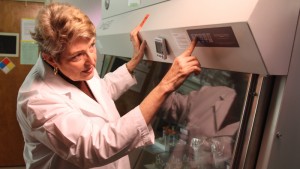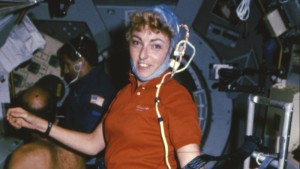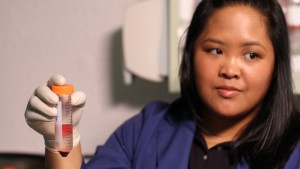This video and article, originally posted on July 26, 2011, were updated on Nov. 26, 2014.

(Michael Goode/KQED)
When SpaceX sends its next spacecraft to resupply the International Space Station on Dec. 16, along with M&M’s and khaki pants for the six astronauts, the rocket will also carry some 40 experiments. Among them will be a cooler with several vials of human cells, sent up by University of California-San Francisco molecular biologist and former astronaut Millie Hughes-Fulford.
Hughes-Fulford hopes to figure out why the human immune system takes a beating in space. Her research could help astronauts stay healthy during the months or years it might take to reach Mars. Her findings could also help aging people here on Earth stay healthy.
“Our hope is that we can apply the new knowledge across the board to anyone who has an immune problem,” said Hughes-Fulford, whose lab is at the San Francisco VA Medical Center and who is employed by the Veterans Health Research Institute. The longtime Marin County resident recently moved to Hawaii.
Space is a useful place to study the human aging process, because in space the immune suppression process is sped up, said Camille Alleyne, assistant program scientist for the International Space Station (ISS).

In Hughes-Fulford’s experiment, which is funded by the National Institutes of Health, human immune cells will remain at the ISS for one month, exposed to microgravity – the technical term used to describe the lack of gravity experienced in space. After 30 days, the cells will return to Earth on board the same SpaceX spacecraft.
